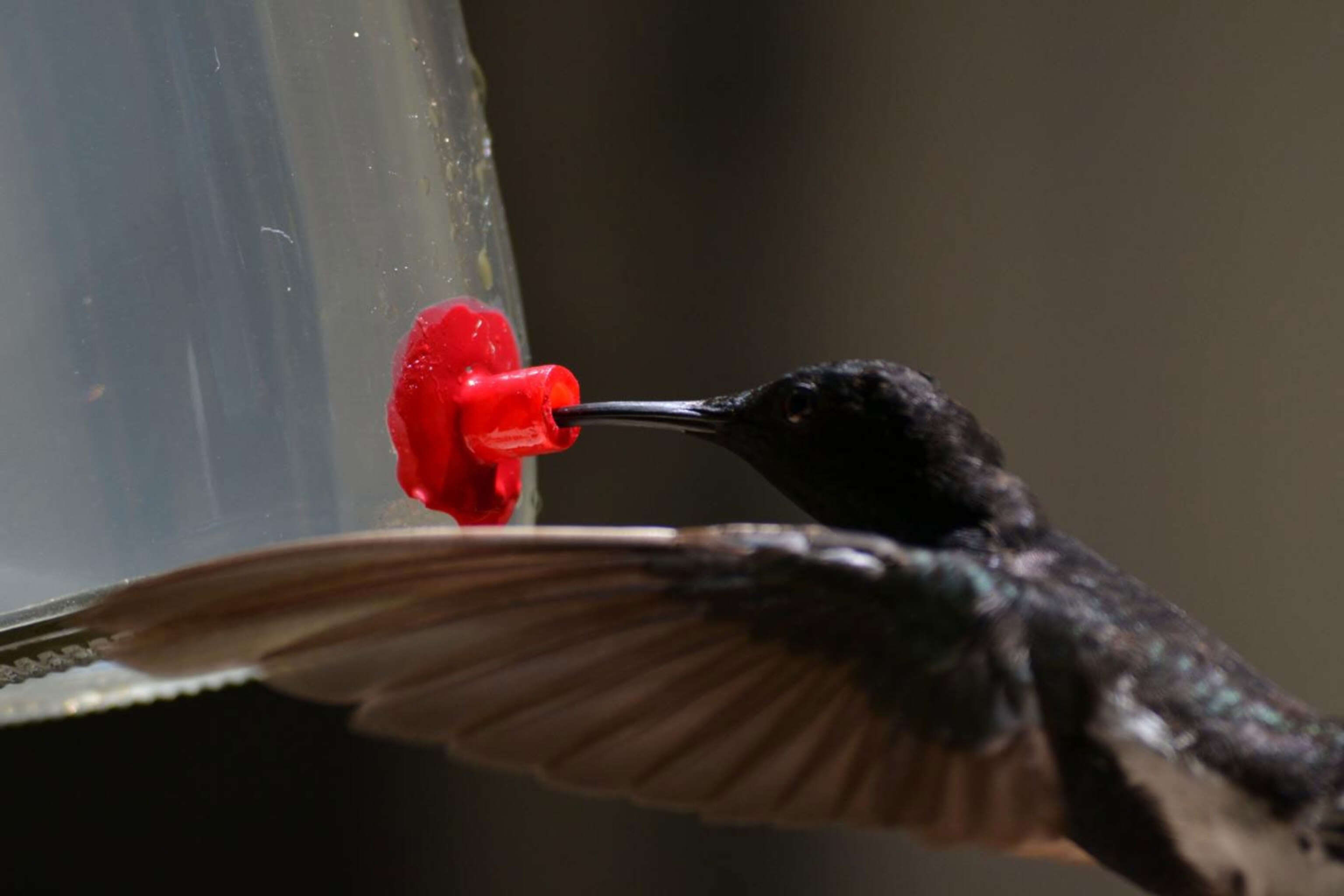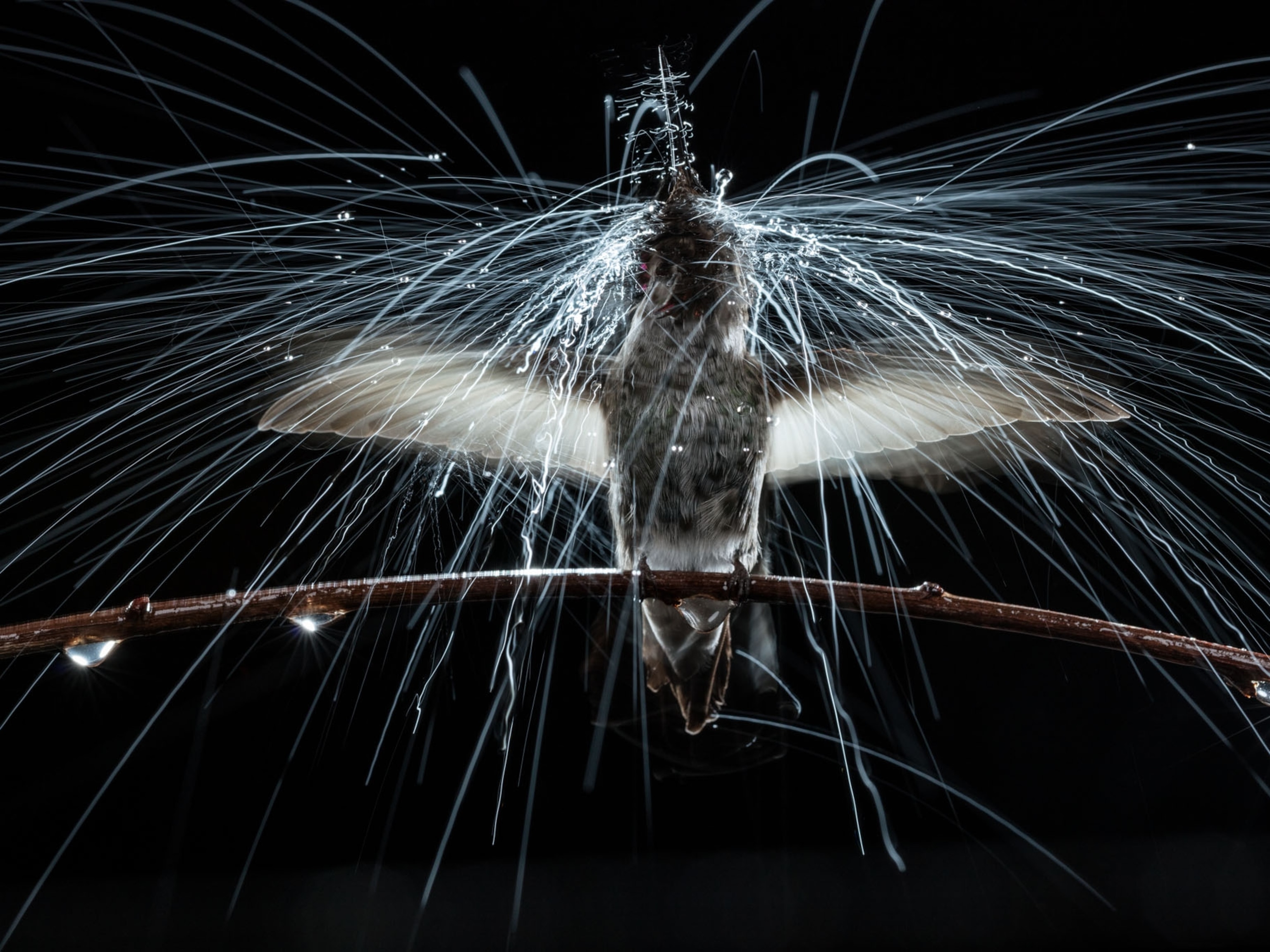
This Hummingbird Makes the Highest-Pitched Call Of Any Bird
The black Jacobin emits a shrill noise that sounds more like a frog or a cricket, leaving scientists puzzled.
Owls hoot and geese honk, but the black Jacobin hummingbird sounds like a cricket. The Brazilian bird's song is so high-pitched that neuroscientist Claudio Mello didn't even realize at first that a bird was making the noise.
During several trips to Brazil's Atlantic Forest to study vocal learning in hummingbirds, Mello heard stories about a strange black hummingbird that looked like it was singing but didn't appear to be producing any sound. (Explore a hummingbird interactive.)
Intrigued, Mello, a researcher at Oregon Health and Science University, managed to locate and record the black Jacobin hummingbird's calls. But when he tried playing back the recordings, he realized his equipment couldn't capture the high pitch of the bird’s call.

So on a later trip, Mello brought audio recorders designed to capture ultrasonic bat calls. This time, when he slowed the recording down 20 times, he could hear an incredibly complex song. (See "Ultrasonic Frog Tunes Its Ears Like a Radio Dial.")
"It sounded like insects, or maybe a frog," says Mello, who documented the phenomenon in a new study in Current Biology.
Mello believes that the incredibly high-pitched call may give the black Jacobin hummingbird a private line of communication in a noisy forest that's home to 40 other hummingbird species.
Can You Hear Me Now?
Little else is known about the birds, so neither Mello nor any other biologist can tell how the birds use their song, or whether it's specific to one sex. What Mello does know is this: It's the highest recorded pitch of any bird. (Read more about hummingbirds in the magazine.)
Its song frequency is so much higher than other bird songs that Mello thinks they must have specialized vocal cords.
Another mystery is how the birds can hear their own calls: The song is above a frequency of 10 kHz, at the top range of what most humans can hear and above what birds are known to hear. The shrill white noise that occurs on the radio is also around 10 kHz. (Read how superhuman hearing may be possible.)
Year of the Bird
In 1918 Congress passed the Migratory Bird Treaty Act to protect birds from wanton killing. To celebrate the centennial, National Geographic is partnering with the National Audubon Society, BirdLife International, and the Cornell Lab of Ornithology to declare 2018 the Year of the Bird. Sign the pledge to find out this month's action and share your actions using #BirdYourWorld to increase your impact.
"It's very puzzling," he says, because "I have no idea if the birds can even hear any of this."
Mello would like to study the birds' inner ears, to compare their structure with that of other hummingbirds. He also wants to investigate the "intriguing question" of whether the birds can actually hear their own voice—and what it means if they can't.





